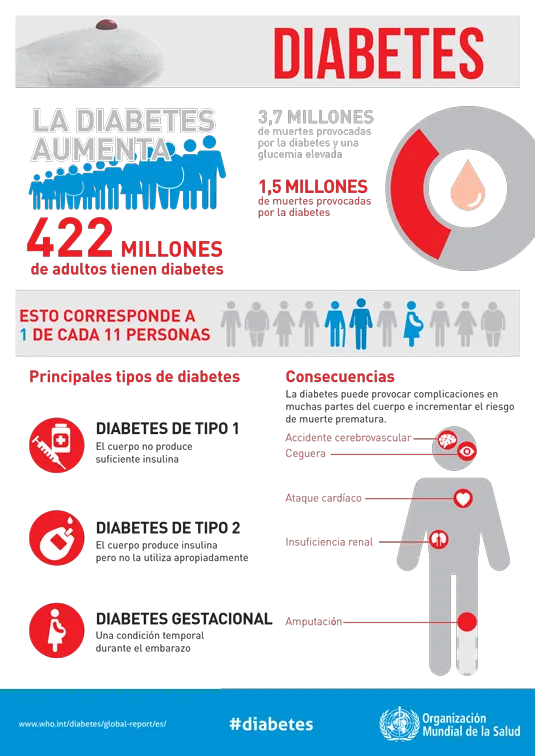Since 1980 the number of people with diabetes has almost quadrupled.The prevalence of the disease is increased worldwide, especially in low and medium income countries.
All types of diabetes can cause complications in various parts of the organism and increase the risk of premature death.
Although the causes of this increase are complex, this is partly due to the increase in the number of people with overweight or obesity and generalized physical inactivity.
442 million adults currently have diabetes.
What is type 1 diabetes?
In type 1 diabetes the pancreas loses its ability to manufacture insulin hormone because the immune system attacks and destroys the pancreas cells responsible for manufacturing this hormone.
Without insulin, there is an excess of glucose that remains in the blood.Over time, high levels of blood glucose can cause serious problems in the heart, eyes, kidneys, nerves, gums and teeth.
Several factors can contribute to type 1 diabetes. Some may be genetics and certain viruses.While type 1 diabetes, usually, it appears during childhood or adolescence, it can also begin in adulthood.
The signs and symptoms of type 1 diabetes can be these:
What is type 2 diabetes?
In type 2 diabetes the pancreas can still manufacture insulin.However, the body does not respond to this hormone normally.Glucose is less capable of entering cells and performing its function of providing energy.
This is a problem known as insulin resistance, which increases the concentration of blood sugar.Therefore, the pancreas must work harder to make more insulin.
With the passage of time, this excessive effort ends up exhausting the pancreas, which stops manufacturing enough insulin to maintain blood sugar concentrations within normality.
More common in adults, type 2 diabetes increasingly affects children, due to the increase in childhood obesity.
Twin studies have shown that genetic factors play an important role in the emergence of type 2 diabetes.
Often, signs and symptoms are manifested slowly.In fact, you can have type 2 diabetes for years and not know.

These are some of the symptoms:


